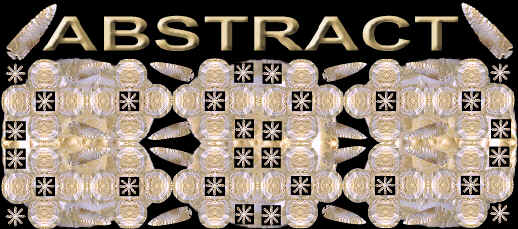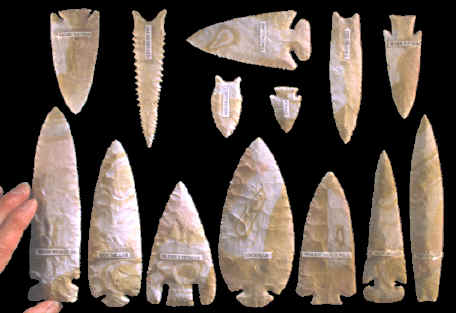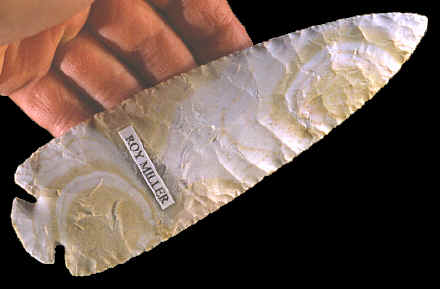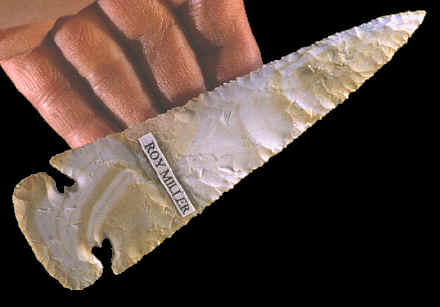|
||
|
||
|
"The
archaeologist/(flintknapper) is usually interested in stone tools
as one way of interpreting the past, while most of the modern
nonacademic knappers are more interested in efficiently producing fine
stone work."---1994, John
C. Whittaker, "Flintknapping," p. 61.
14 POINTS FROM 1 HIGH RIDGE CHERT NODULE This flintknapping project was organized by Brian Wrage. All fourteen points were made from one High Ridge chert nodule. Having everyone working from the same piece of stone is a good way to display several different flintknappers works of art. The collection is a great "curiosity" -----fun to look at. |
||
|
||
|
These points were made from a nodule that measured about 18 inches (45.7 cm) long. It was collected near St. Louis in Missouri. About a third of the nodule was colorful and that was the part that was used for the project. |
||
|
||
|
The nodule was sawed into slabs with a rock saw to save material. Otherwise, it wouldn't have been possible to produce this many points. Doing it the traditional way, the nodule would have been fractured into a few large flakes prior to shaping them into bifacial preforms. Doing that would have meant loosing quite a lot of material from within the nodule. |
||
| CONTINUE ON TO PAGE TWO | ||
|
"REFERENCES"
1994,
Whittaker, John C., "Flintknapping: Making & Understanding Stone
Tools," p.61. |
||




